Introduction
Physical public spaces have for decades been important features of urban living, community centerpieces that provide a number of concurrent benefits – from health advantages to spurring economic revitalization and increased home values. If anything, the technological and medical conditions of modern life – from social media and virtual meetings to the Covid-19 pandemic – have made the importance of these public spaces (including parks, courtyards, plazas, and trails) more important, not less. This is particularly true when we view public spaces as a connective device: one of the last methods for bringing people together for genuine, face-to-face interaction.
City planners and landscape architects are challenged with not only prioritizing and designing these spaces, but with making them vibrant, welcoming, and ultimately successful. In nearly every diverse urban setting, numerous objectives are competing against one another for the same finite real estate – so, what makes this space so important, what components contribute to a prosperous public space, and how does it ultimately serve as an indispensable weapon in the fight against social isolation?
Why Public Space Matters
A greater percentage of the world’s population resides in cities than ever before: more than 56%, with that number expected to grow to 70% in the next quarter century. With more and more residents squeezed into a fixed amount of urban area, living space itself is getting smaller.
This reality makes the importance of “third spaces” – social surroundings that are separate from the first two “spaces” in most people’s lives: home and the office – all the more crucial. While this can include gyms, community centers, cafes, and theaters, there is one “third place” that (due to its equality of complimentary access) is perhaps more important than any other: the outdoor public space, such as parks, courtyards, plazas, and trails.
The advantages of neighborhood public space, especially those that embrace green features, is well documented: they provide value in everything from sustainability and climate action to stimulated economic redevelopment. But there’s an additional, vital benefit to well-designed public space: its ability to bring people together.
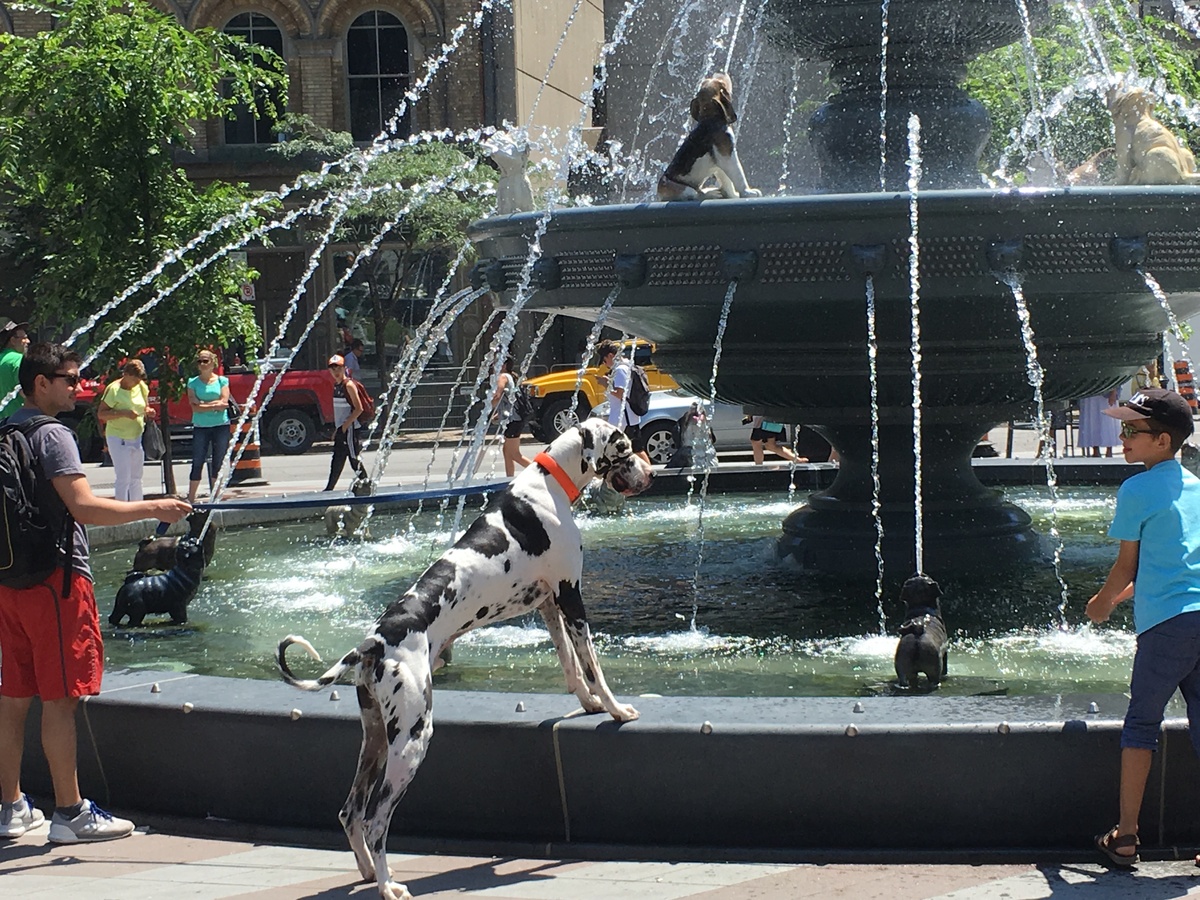
Berczy Park in Toronto is centered around the now-famous dog fountain.
Marc Halle, co-president at Claude Cormier Landscape Architecture (CCxA) identifies this as one of the most important features of successful public space:
Public space may be the only space left where you have a chance to have empathy for people who are not like you, right? It’s a chance where everybody can be together.
He used Berczy Park in Toronto as a great example of this, where the park’s centerpiece dog fountain provides a gathering point around which visitors can share a smile with total strangers. “There’s the story where there’s an unhoused person and a little kid talking to one another about the story of the dogs and the cat and the birds – and you know, they were just playing a game together.”
In a piece about Claude Cormier and Berczy Park, writer Jason McBride said much the same thing: “Public spaces such as Cormier’s serve as compelling, vital arenas where citizens – no matter their income level or background – can interact. The more appealing those places are, the more likely those interactions.”
Prosperous Public Space
But what makes for an appealing public space? Firstly, it takes investment – both in a city’s attitude to prioritize it and the corresponding budget that that buy-in represents. Cormier, in McBride’s article, notes the importance of this investment: “Cost versus value is something that Cormier thinks about for each project, and he is adamant that, if anything, we don’t spend enough money on our parks, streets and plazas. ‘When you do it cheaply, it’s wasted, because people won’t come back.”
Marc Halle echoes this when he says that “If you get it right, then it seems to be reciprocated by the people. When you get it wrong, they will let you know as well.” Letting you know you got it wrong, of course, typically takes the form of not coming back. So, how do you get it right? Some of the most important factors that contribute to a successfully designed public space include flexibility, sustainability, and creativity.
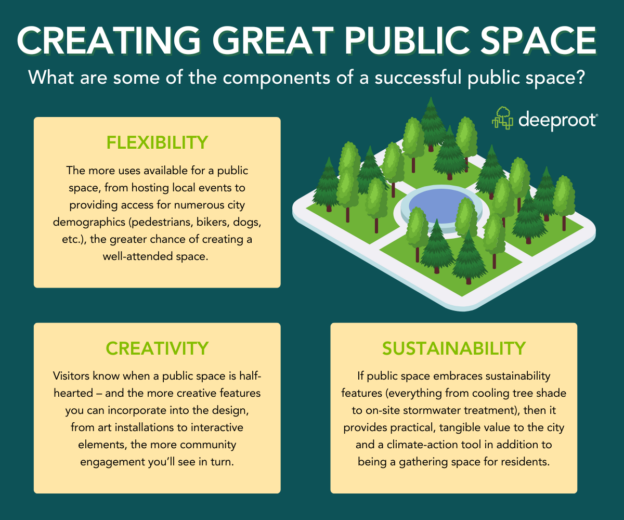
The more available uses for a space, the more likely that space will be utilized – this is why flexibility is so important. New developments are increasingly incorporating “flex space” into their design plans: areas that can be transformed from one thing to another, shifting from walking space to gathering space to dining space to parking space, depending on need. Even without this shapeshifting ability, a single space can (with the right design) accommodate the needs of many different demographic at once, from walkers and shoppers to bicyclists and pets. This is very much the case at Berczy Park.
Embracing sustainability is also a successful practice for public space. Firstly, the power of green space and tree shade is multilayered: not only will people spend more time in a cool, green environment, but trees provide the community with a host of climate-action and economic benefits (see our blog here to learn more). At the same time, if cities can utilize green space and, say, LID stormwater management within the public realm, they’re getting a two-for-one: successful public space and environmentally beneficial performance.
Finally, creativity is one of the most important components in the equation – and also the most difficult to achieve. Cormier identifies this when discussing cost, essentially asking “how much is too much if, without the right creative features, people won’t visit the space?” In his case at Berczy Park, the dog fountain was the centerpiece; and it’s proven to be worth every penny of investment, given the interaction and community pride it evokes. Creative art pieces and interactive design components help create identity, give local residents pride in their spaces, and keep people coming back.
Success Stories
What are some examples of great public spaces?
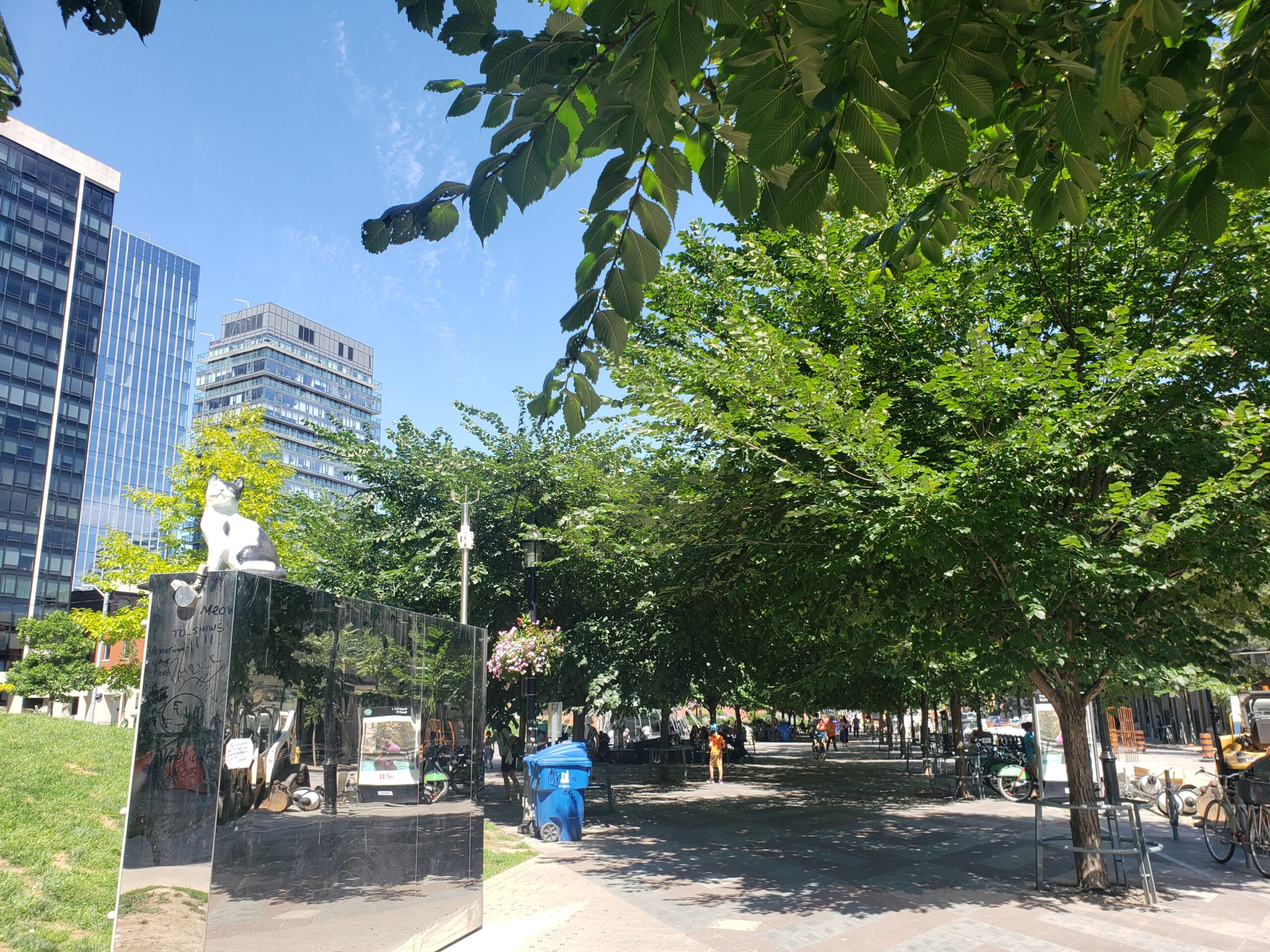
Berczy Park / Toronto, ON
As mentioned throughout the piece, Berczy Park in Toronto, Ontario, is one of the best examples of a successful public space. Reopening in 2017 after the redesign by Claude Cormier and his team, the park is now one of the most-visited parks in all of Toronto. Its dog fountain and enormous alley of trees make it a welcoming destination for locals, tourists, and even dogs. Read more about this project in our case study.
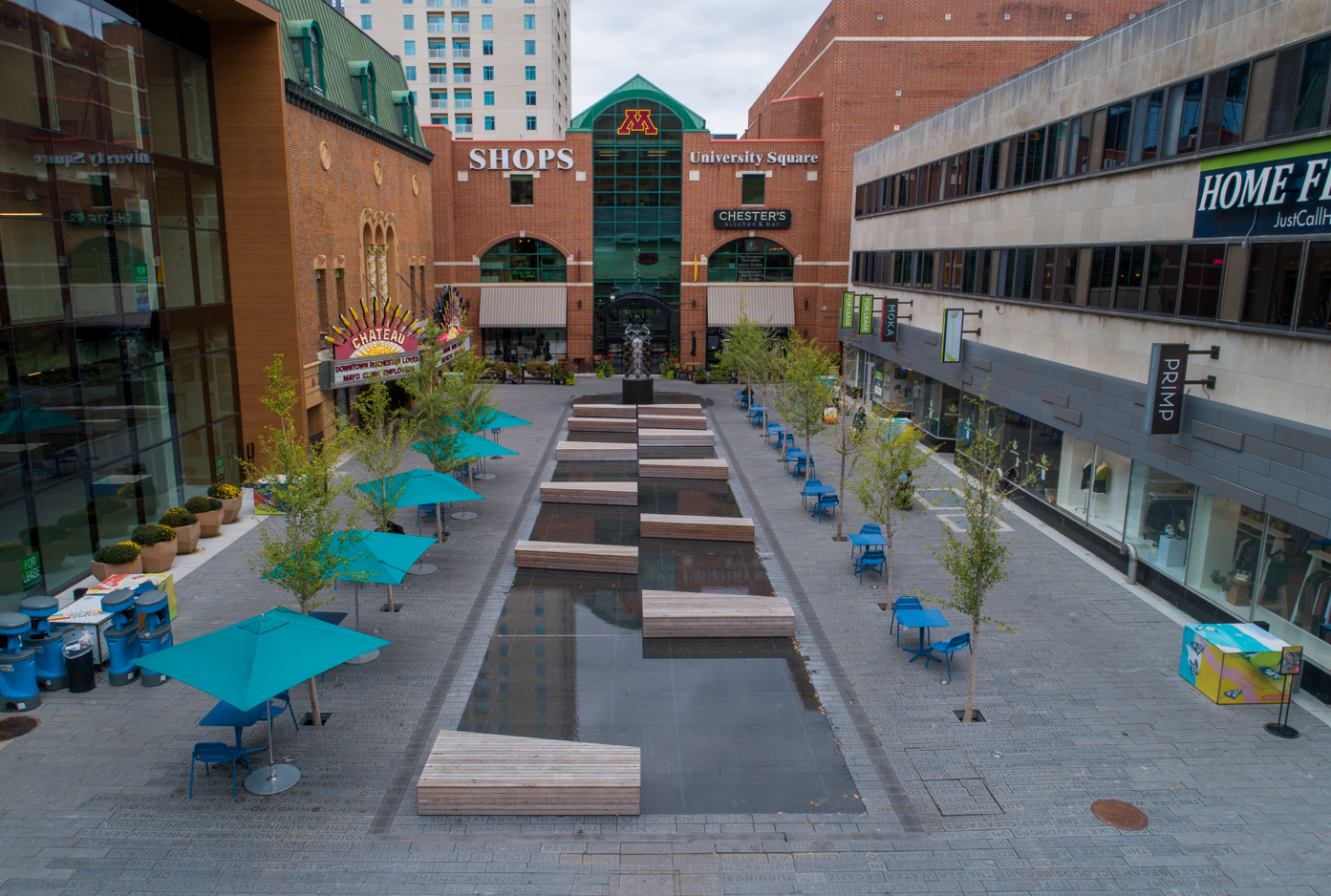
Discovery Walk / Rochester, MN
Just outside the Mayo Clinic headquarters in Rochester, Minnesota, a massive multi-stage public space renovation is underway, with the first stage complete: Discovery Walk. This streetscape includes a number of semi-mature trees that are now flourishing; likewise, the adjacent Peace Plaza was created, a flex-use area that can transform from a visitor gathering space with a ground fountain to an event venue with stage. Read more about this project in our case study.
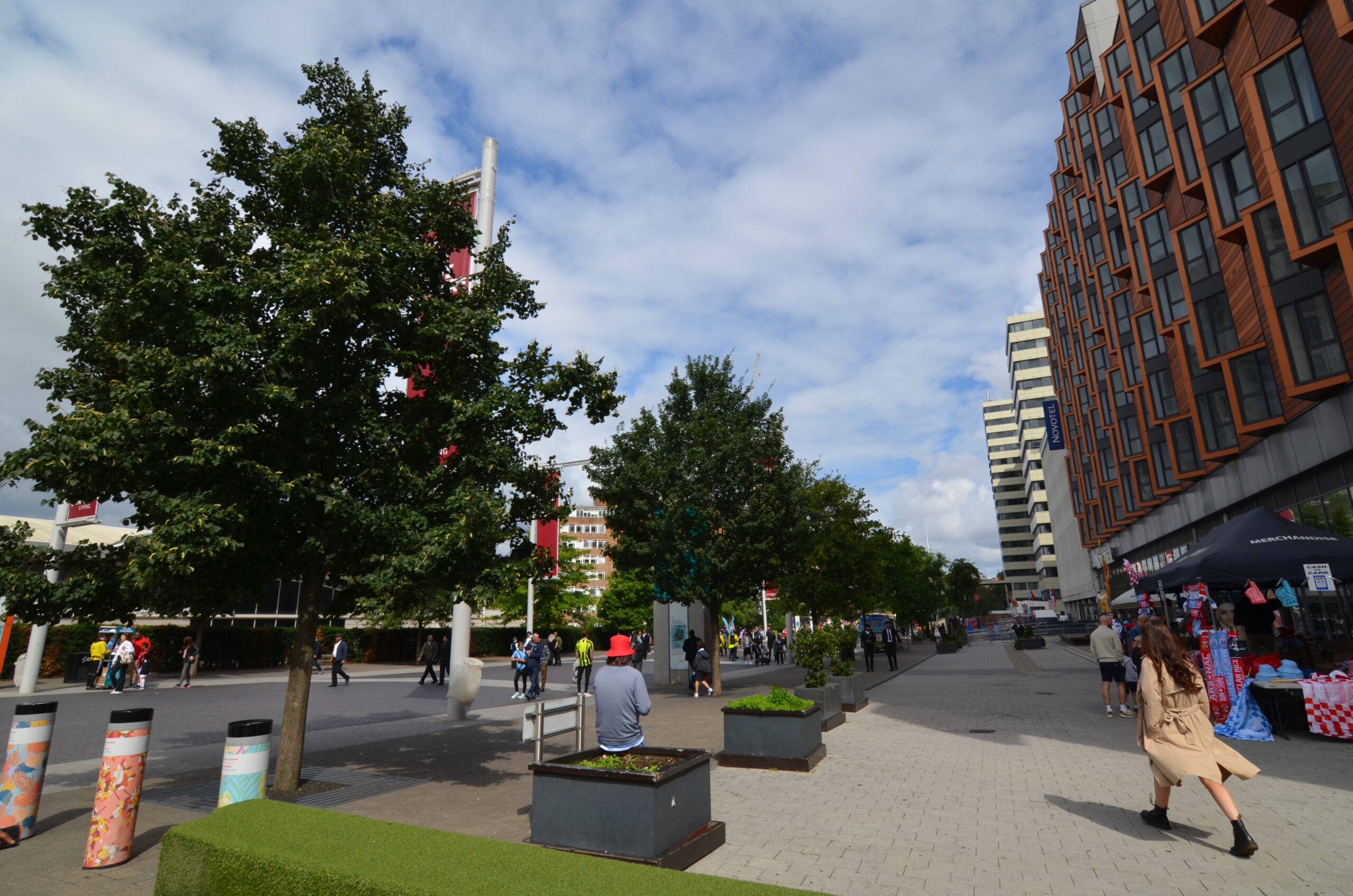
Wembley Way / London, UK
The famous Wembley Stadium in London underwent a modernization in the late 2010s – and, along with that, came a rethinking of pedestrian roadway leading up to the stadium. This wide corridor allows for easy access to the stadium from the tube and is lined with street trees, creating an inviting atmosphere for pedestrians, shoppers, local workers, and residents. Read more about this project in our case study.
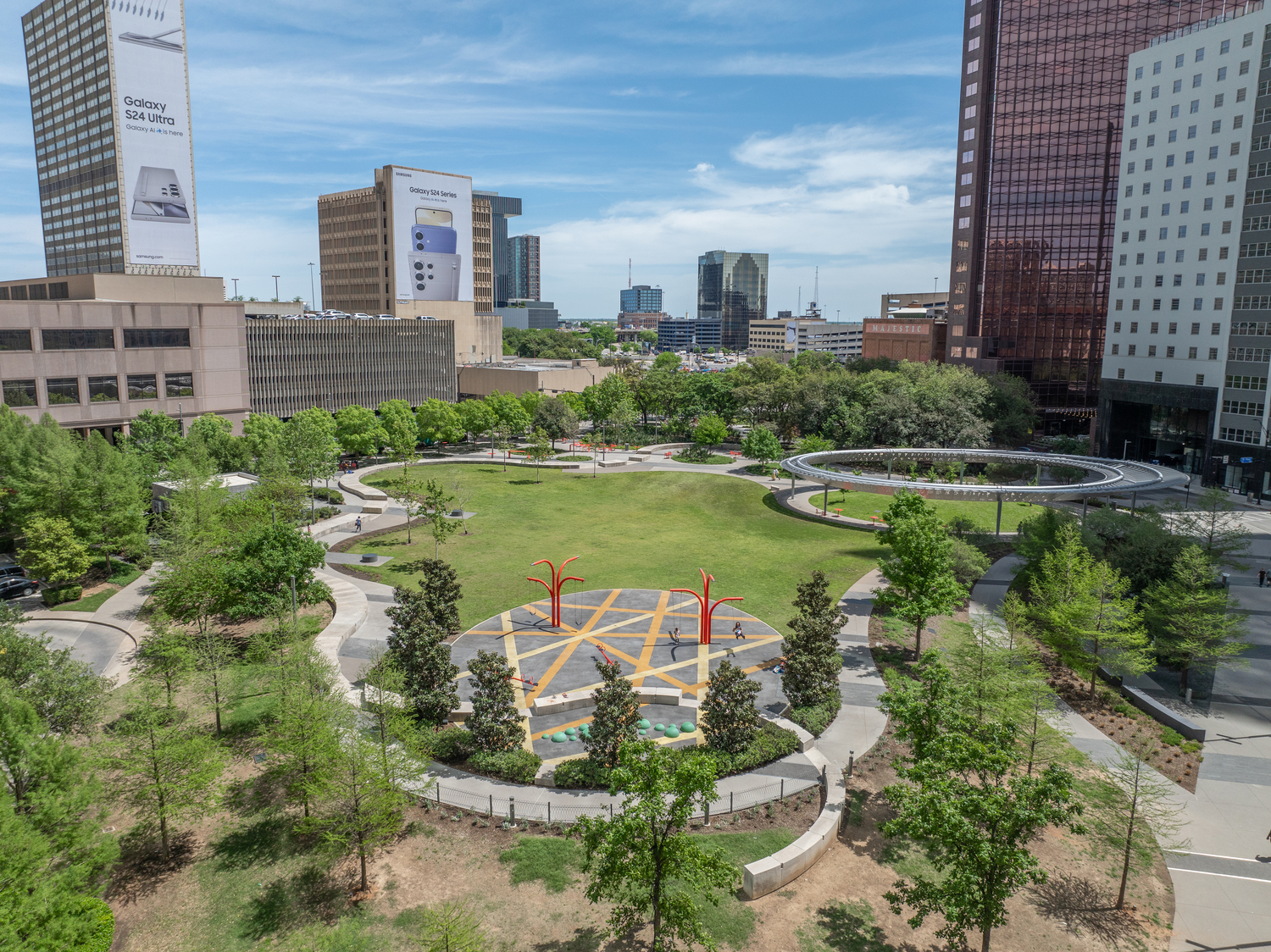
Pacific Plaza / Dallas, TX
In 2018, what is now Pacific Plaza in Downtown Dallas evolved from a near-vacant parking lot into a sustainably focused community park. Its walkways are flush with green space, which abuts another open grassy area – and the maturing trees are ensuring shady relief from the hot Texas sun. Read more about this project in our case study.
Conclusion
Ultimately, public space is most successful when creativity meets community-focused design. As Cormier says, his first priority is the city residents: “We’re doing it for the people. We are working with developers who are starting to understand that if you do a good landscape, it’s going to bring them value. A way to do that is through good open-space plans, good amenities, good integration with the street. Then the public feels that they have something there for them.”


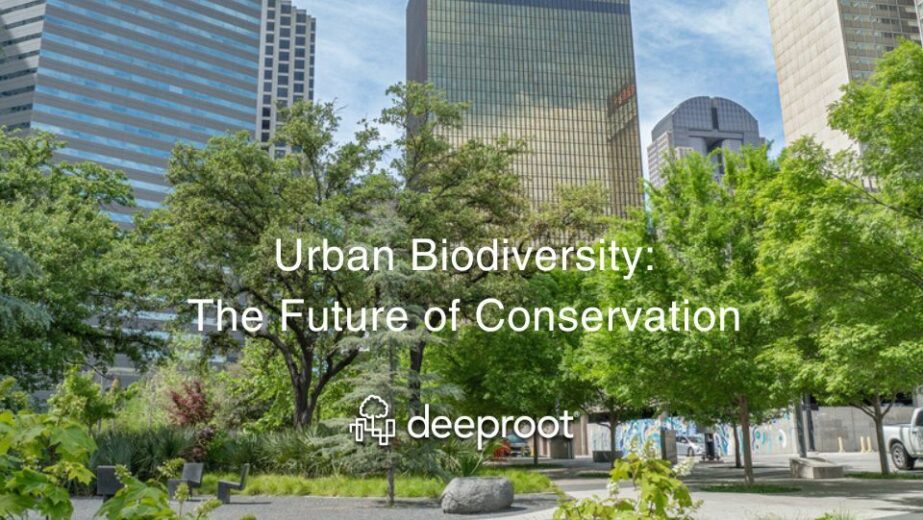



Leave Your Comment